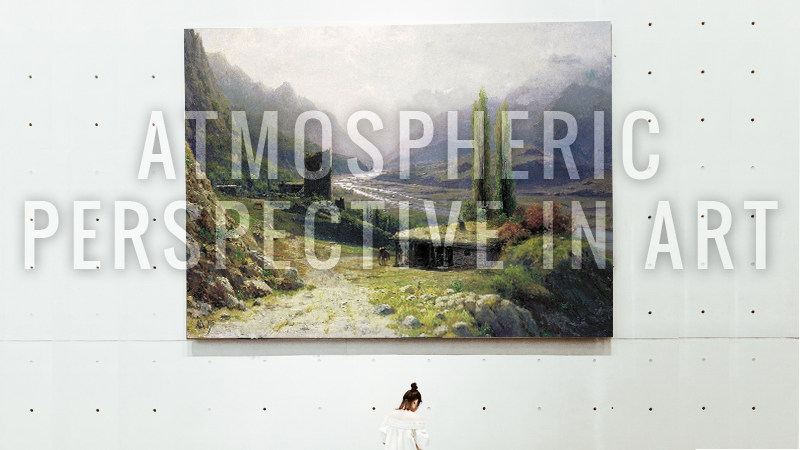How to Use Atmospheric Perspective in Art?
Do you want to learn how to use an Atmospheric Perspective in art? Stick around as we share the answer..
The beauty of art is that it’s limitless and free. Artwork from the early centuries may have a distinct characteristic, however, modern artists can try to replicate the styles used.
In art, there’s freedom for artists to create new things out of raw materials.
Just like any artwork, there’s always a subject that relays the message of the artist. Paintings can tell a story, and sometimes the story differs from viewer to viewer.
Experiences, perspectives, and knowledge all work together to decode the story to fully understand what the artwork is about.
One known technique in art is called atmospheric perspective, which is responsible for the illusion of light, shadow, and the atmosphere of the subject.
In paintings, you can easily notice how artists use this perspective to make the artwork depict reality, or sometimes fantasy.
Let us continue to learn what atmospheric perspective is and how it affects artwork.
Keep reading…
Art Perspectives
In the drawing, one needs to know the basic perspectives called horizon lines and vanishing points. Some drawings only need one perspective, but most of the time two or more perspectives are used to enhance the artwork.
The horizon line is a horizontal line that meets the eye level. The best example would be where the ocean meets the sky. This is similar to the horizon line; an unseen line that exists in all paintings.
Now, vanishing points create illusions of perspectives. For instance, one side of the building facing a different direction has vanishing points to depict the perspective.
These perspectives are crucial in making art look natural and real. Flat drawings are okay, but when painting, the artwork looks nicer with perspectives.
Another popular perspective used in art is an atmospheric perspective or aerial perspective.
This is the use of color modulation to stimulate changes in the atmosphere, as seen at a distance. This type of perspective has been used for a very long time, as Leonardo da Vinci first used it as an aerial perspective.
In his book Treatise on Painting, da Vinci said that colors become weaker as a person looks at them from a distance. To depict this effect, an artist needs to adjust the color from the background and add depth to the distance.
As light passes through, the degree of depth is enhanced. Dark objects and shadows look real, almost the same as a distant mountain or building.
To put it simply, the atmospheric perspective is a visual effect or method that differentiates two things at a great distance. Softening the colors from the distance makes them appear far, compared to the object lying closer.
If you look at a painting using this atmospheric technique, you can easily see how colors from the distance are faded. This indicates the position of objects from the main subject, which lies closer.
Importance of Atmospheric Perspective
The reason why artists use this type of perspective is to depict reality, showing things as we actually see them. The technique makes it easier for us to appreciate art as it demonstrates the actual architectural elements we know.
If you look out at a far distance, you can’t visualize the details of what lies ahead, especially if the object is miles away.
As a viewer, you can only see shadows and silhouettes. In art, these small details matter because it affects the meaning of the artwork.
How to Create the Illusion of Atmospheric Perspective
You only need four key things to create an illusion of an aerial perspective.
-
Texture
Texture can either be an illusion of texture or a physical texture itself. For the illusion of texture, you can simply make objects appear smoother at a distance. Objects lying closer are in great detail; lines and rough surfaces help to make the illusion. The brushwork is needed to create this illusion.
-
Value
Value refers to the lightness and darkness of objects. Objects from a distance appear as though they have a higher value. In making this, you need to understand that objects from a distance are tinted.
-
Clarity
It is a simple concept that many beginners find tricky. When drawing objects from a distance, you don’t need to make particular details because they can’t be seen. Simplify the detail to create the illusion of an atmospheric perspective.
-
Color Saturation and Temperature
Just like in value, you need to understand that distant objects appear to be cooler in terms of color as compared to nearer objects. However, you can still use warm colors for distant objects. It all boils down to the clarity, texture, and colors used.
Bottom Line
The world of art is vast and to be a great artist means understanding the key elements and techniques. I hope you learned something today. You can use this atmospheric perspective technique to easily demonstrate distance and add the illusion of depth to your artwork.
Thanks for reading. Cheers!
Read Latest Posts

Hi, I'm Anthony Tran! Welcome to my site. I live in Arizona and am obsessed with all things related to building an Online Business and working from home. Learn about my journey here.
Follow Online





